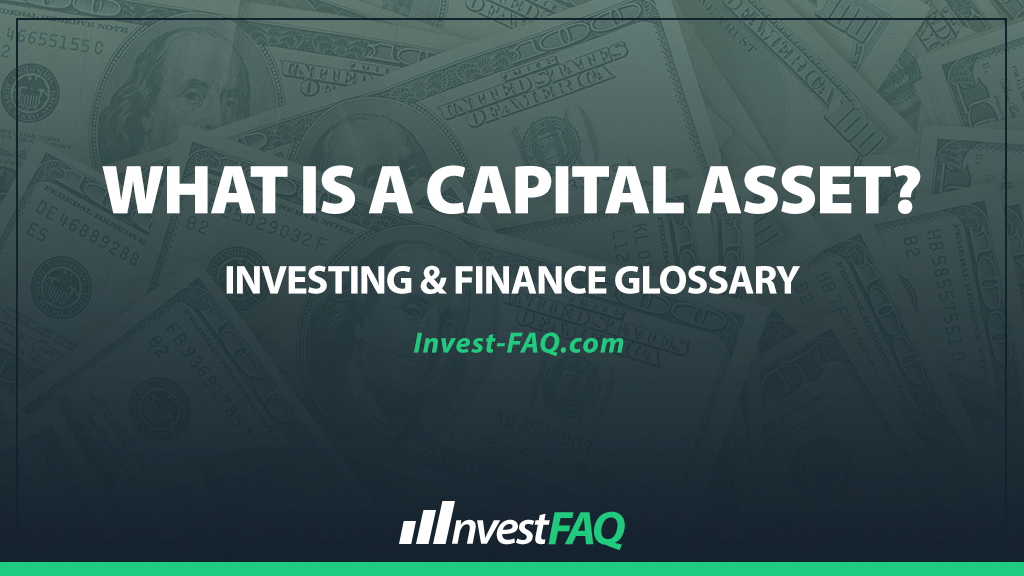
Capital Asset
Contents
A capital asset is a long-term asset that is not intended for sale in the regular course of a business’s operations but is held for investment, operational use, or economic benefit. These assets include land, buildings, machinery, vehicles, furniture, patents, and stocks or bonds owned by the company.
Capital assets are foundational to a business’s operational capabilities and future growth prospects. They are typically used in the production of goods and services, administration, or rental to others, and their investment and management are crucial for long-term strategic planning.
The acquisition, maintenance, and eventual disposal of capital assets involve significant financial planning and impact a company’s balance sheet, cash flow, and profitability.
Example of a Capital Asset
Let’s consider “EcoFurnishings Inc.,” a furniture manufacturing company that purchases a new manufacturing plant for $2 million. This plant is expected to increase production capacity and operational efficiency.
Acquisition: EcoFurnishings Inc. records the purchase as an increase in its property, plant, and equipment (PPE) account by $2 million, reflecting the cash outflow in the investing activities section of the cash flow statement.
Depreciation: The manufacturing plant, having an estimated useful life of 20 years with no salvage value, is depreciated using the straight-line method, resulting in an annual depreciation expense of $100,000 ($2 million/20 years).
By purchasing the manufacturing plant, EcoFurnishings Inc. invests in a capital asset that enhances its production capabilities.
The initial capital outlay impacts the company’s cash flow and increases its asset base, while the annual depreciation expense reduces its net income over the asset’s useful life. This depreciation is a non-cash expense that allocates the cost of the capital asset over its useful life, affecting the company’s financial statements and tax liabilities.
Significance for Investing & Finance
Capital assets play a critical role in accounting and financial management for several reasons:
Asset Valuation: Proper valuation and classification of capital assets are essential for accurate financial reporting and assessment of a company’s net worth.
Depreciation and Amortization: These processes systematically allocate the cost of tangible and intangible capital assets over their useful lives, impacting profit and loss statements and tax calculations.
Investment Decision-making: The acquisition and disposal of capital assets are significant investment decisions that require careful analysis of their potential return on investment and alignment with the company’s strategic goals.
Tax Implications: The purchase, depreciation, and sale of capital assets have important tax implications, affecting a company’s taxable income and capital gains tax liabilities.
In summary, capital assets are crucial for a business’s operational efficiency, capacity for growth, and long-term financial health.
Accounting for these assets involves detailed record-keeping and financial analysis to ensure they are accurately represented in a company’s financial statements, supporting effective management and strategic decision-making.
FAQ
What distinguishes a capital asset from inventory in a business’s accounting records?
A capital asset is intended for long-term use and contributes to a company’s ability to generate income, whereas inventory is meant for sale in the normal course of business operations, affecting how each is accounted for and impacting financial statements differently.
How do businesses determine the useful life of a capital asset for depreciation purposes?
The useful life of a capital asset is estimated based on factors such as the asset’s expected period of service, wear and tear from use or obsolescence, and legal or regulatory limits, guiding the depreciation schedule to allocate its cost systematically over its useful life.
Can a capital asset ever become an expense for a company?
A capital asset becomes an expense through depreciation or amortization, where its cost is systematically expensed over its useful life, or if the asset is sold for less than its book value, resulting in a loss that is expensed immediately.
What happens to the accounting treatment of a capital asset if it is upgraded or improved?
Upgrades or improvements that extend a capital asset’s useful life or enhance its value are capitalized, adding to the asset’s book value and adjusted depreciation schedule, rather than being expensed immediately.
